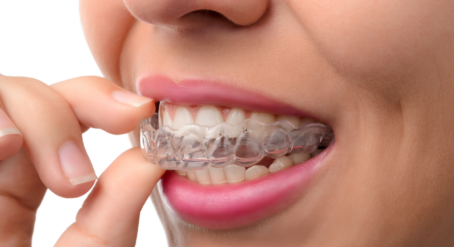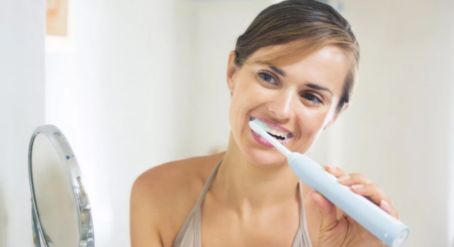If your orthodontist has recommended that you or your child get braces, then being prepared for the big day and what comes after is important. Our article will explore the different ways you can be best prepared for getting your braces and what to expect on the day.
But don’t forget – you can always ask your orthodontist any questions that you might have in the lead up to your braces being put on (or on the day itself). They are the experts on all things teeth straightening, so they will have the knowledge to answer any questions you might have about getting your braces.
How should you prepare your teeth before getting braces?
One of the best things you can do before getting braces is booking an appointment with your general dentist for a routine check-up and clean. Your orthodontist needs your teeth and gums to be nice and healthy before your braces are fitted. You should also thoroughly brush your teeth and floss in the lead up to your appointment so that your teeth and gums are in the best possible condition on the day.
What should you do the day you get your braces fixed?
There are a few things you can do on the day of you get your braces to help alleviate any nerves you might be feeling.
For starters, you gently clean your teeth after your last meal before your braces appointment. This will help the orthodontist apply the cement to your teeth, as they’ll be a plaque-free surface.
Another thing you can do is take a selfie of what your teeth looked like before getting braces. This can be a rewarding thing to look back on once your braces have come off and your teeth are picture-perfect.
You should also make the most of how smooth your teeth are before you get your braces. It might be tempting to run your tongue over your braces once they’re on, but you might experience some initial pain and discomfort if you do so.
How long does it take to put braces on teeth?
Treatment time will vary from person to person, but in general it can take up to 45–60 minutes, with some procedures taking as little as 30 minutes. After your teeth are conditioned and the oral adhesive is applied, the braces are treated with adhesive and fitted to your teeth. After this the orthodontist will usually connect each tooth with wires.
Do you need to get cavities filled before braces?
You can get braces without getting your cavities filled. But it is always better to have your specialist tend to your cavities first. That way, you won’t have to experience any of the pain, discomfort, swelling or dangers that may arise when you let cavities go for too long. If you have any cavities, your orthodontist will give you advice on what your next steps should be.
How are braces put on your teeth?
Your orthodontist will begin by thoroughly cleaning and drying your teeth. With traditional metal or ceramic braces, they will then secure the metal brackets to each tooth using special bonding glue. Next, they’ll slide metal bands around your back molars to secure the brackets, before affixing the archwires with small rubber bands known as ligatures.
A similar process is followed for lingual braces, however, the brackets and wire are placed along the inside of your teeth.
The day after getting braces
Once your braces are fitted, you’ll need to make small changes to your day-to-day routine to make sure your treatment runs smoothly.
It’s a great idea to keep pain relief handy, as you may experience some discomfort for up to a week as you adjust to your new braces. If you start experience aches and soreness, then you can take some over-the-counter pain relief like paracetamol (e.g. Panadol) or ibuprofen (e.g. Nurofen).
You should also start eating more softer foods in the first week or so after getting your braces. Your teeth might still be tender and not up to eating anything that’s too hard or chewy, so it’s best to stick to foods that are safe for your braces.
A habit that you should adopting is to brush your teeth after eating. This will make caring for your braces much easier, as well as helping maintain the health of your teeth and gums. If you can, invest in a soft travel toothbrush and keep it in your bag or backpack for on-the-go cleaning.

When do you start seeing changes with braces?
You may notice a slight difference in your smile after four weeks, but generally, it takes two to three months for braces to begin noticeably straightening your teeth. As with all orthodontic treatment, every person’s bite and circumstances are different – meaning the time it takes for braces to start visibly aligning your teeth will differ as well. People with slightly crooked teeth will probably notice a difference sooner than those with severe malocclusion.
What should you do after your braces are removed?
One of the first things you should do after getting your braces removed is to smile in a mirror and look at your newly straightened teeth. It can feel incredibly rewarding to see your perfect new smile, and even compare it to the before photo that you might’ve taken too.
When your braces come off, you might notice your teeth might be uneven in colour. The lighter spots on your tooth are from the bracket protecting your enamel from exposure to food and drink. While this discolouration can gradually go away on its own, some orthodontists might recommend getting your teeth whitened after one or two months when your teeth have settled a bit.
Another thing you can do is enjoy the foods and drinks you avoided while wearing braces. Whether it’s throwing a pizza party, snacking on some nuts or eating a whole apple (without slicing it!), now that your braces are off you can enjoy the foods you missed out on. But given that your teeth will still be sensitive after your braces come off, take your time and ease back into eating foods you had to avoid during your treatment.
Ready to get braces?
If you’re looking to get braces, then the first thing you need is an orthodontist. You can discover a local orthodontist near you, and request a consultation, with our Finder Tool.











can i still get braces if i have a silver tooth?
Generally, you’re still able to undergo orthodontic treatment with a silver tooth, however it may need a special band around it to ensure it stays in place. It’s best to consult your orthodontist to get their advice on the best avenues for safe orthodontic treatment. You can find an orthodontist in your area using our finder tool.
Is it cost effective to brace top teeth first or better to have braces on for both (top & bottom) at the same time? Thanks in advance.
Orthodontists recommend taking a whole mouth approach to aligning teeth and jaws, so that everything works together to correct underlying issues. This includes correcting the bite and aligning the jaw alongside straightening teeth, rather than focussing solely on straightening the visible front teeth.
Thanks for sharing this good article, keep sharing.
Thanks for sharing this good article, keep sharing. dave